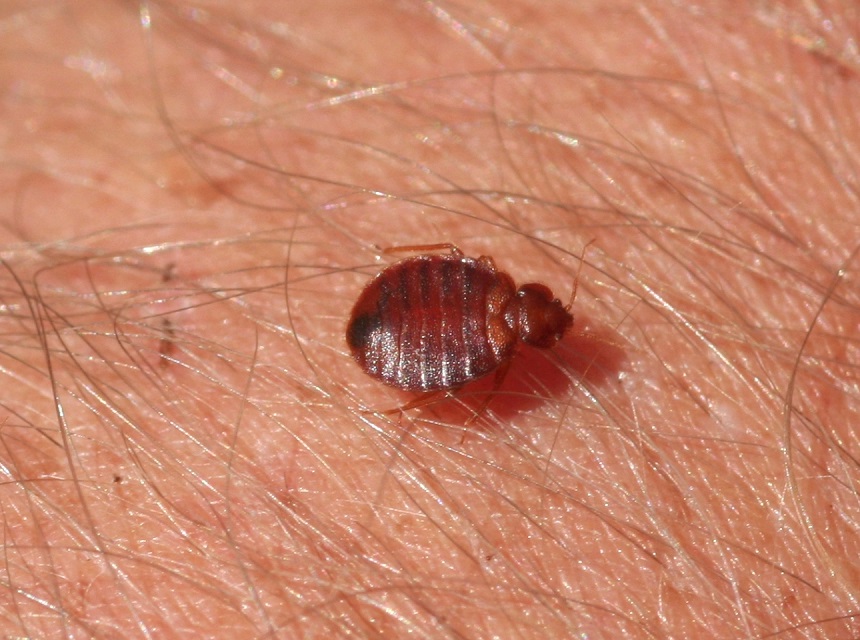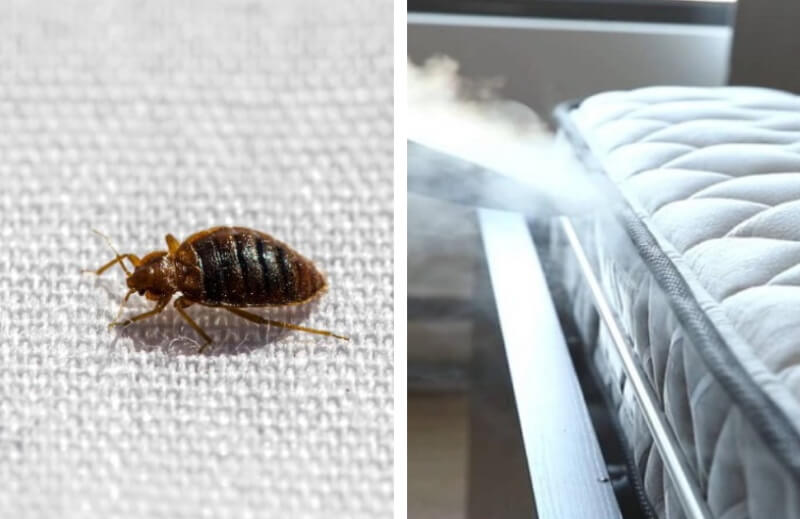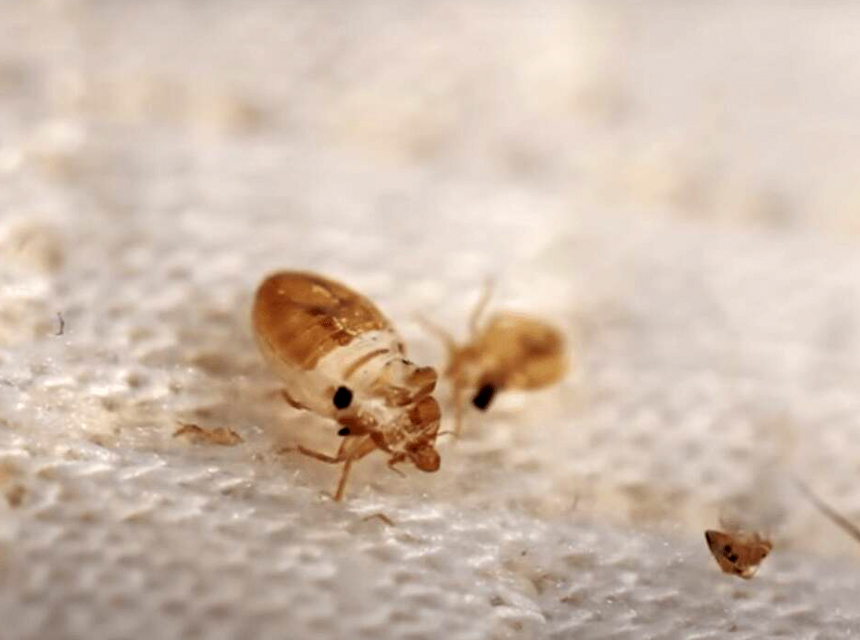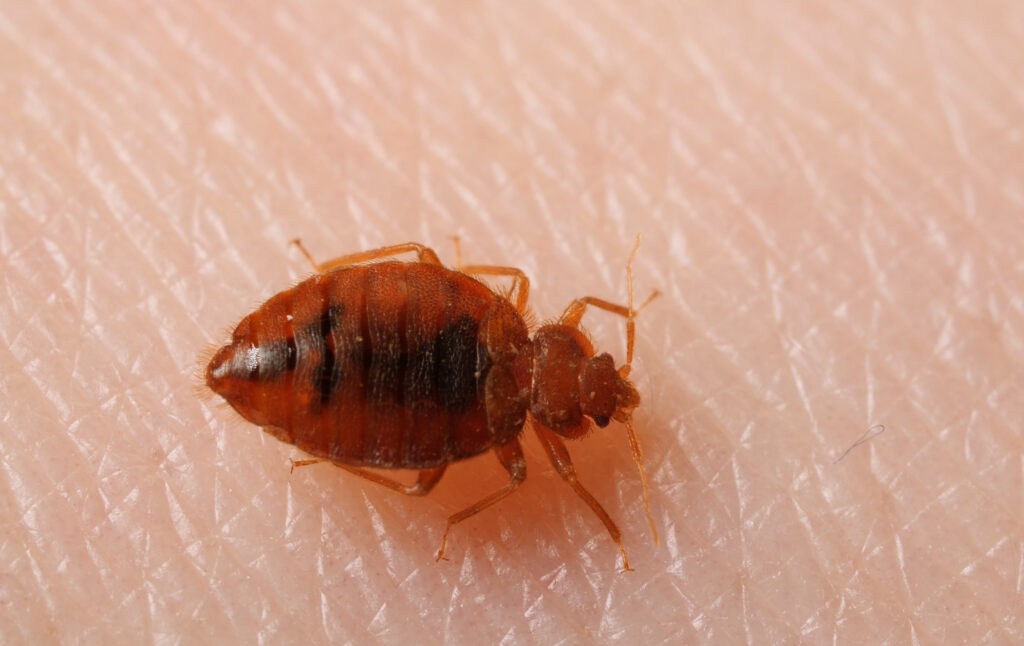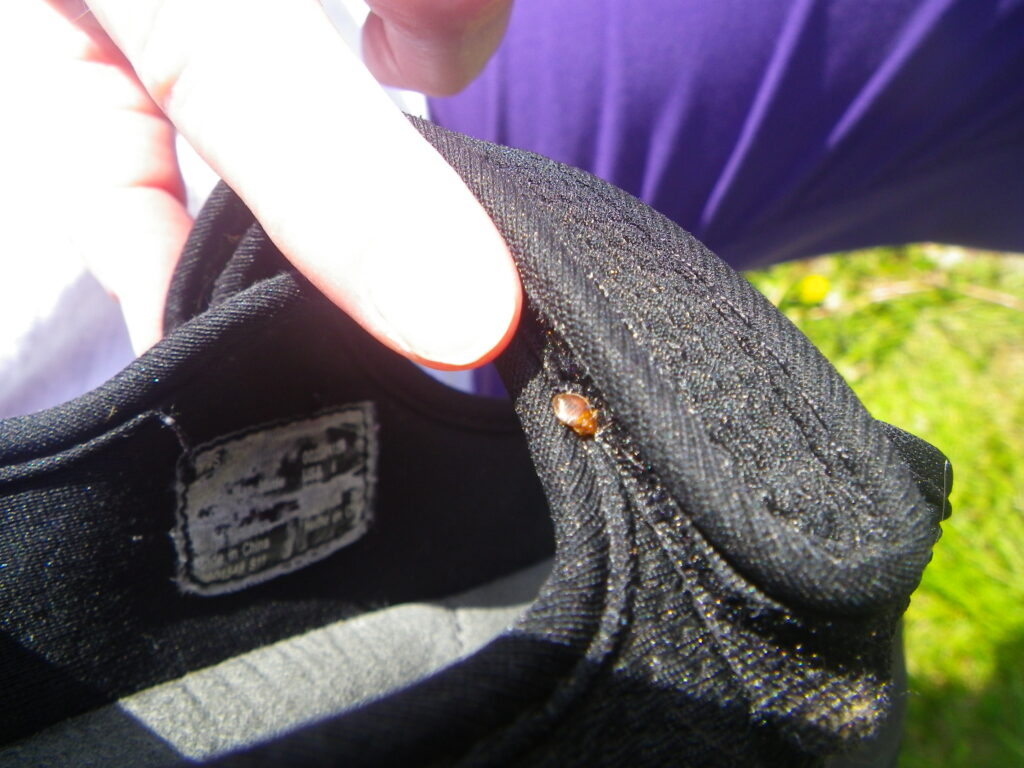

Bed bugs are tiny little pests that can get into your home and infest it before you know they’ve moved in. There are many methods to get rid of these bugs, but for those who want to try out a more natural and safer alternative than chemical repellents, essential oils may be a good idea.
One option is to learn how to use peppermint oil for bed bugs. This oil has a fantastic scent that people love, though bed bugs find it overpowering and unpleasant, making this essential oil a great choice for keeping those nasty little bugs at bay. If you’re wondering why this oil works and how to use it, the following sections can help you get started to keep your home bed bug-free.
Humans enjoy the scent and flavor peppermint oil has to offer. We use it in food, soaps, warm baths, and in various other ways to enhance our lives. The high menthol content also makes this a great oil for cooling sensations and clearing our nasal passages when we’re sick.
Of course, the strong scent that we love is what bed bugs find so offensive. Using undiluted peppermint oil on bare skin can also be an irritant, which is another reason bed bugs stay as far from this oil as possible.
Yes, peppermint oil repels bed bugs. These pests are allergic to a variety of essential oils, and peppermint oil is no exception. The strong scent is more than they can handle, so if you spray peppermint oil on and around your bed, these bugs will flee to prevent coming into contact with this overpowering oil.
The problem with using peppermint oil as a bed bug repellent is that it only gives you a short reprieve from the bugs. Over time, the peppermint scent will dissipate, and your bed will go back to its usual scent. At this point, the bed bugs will return and make themselves at home again.
You can continue to reapply the scent every day, but this solution is only temporary, so a more long-lasting one will be needed to get rid of the bugs completely.
Peppermint oil can irritate or cause pain when sprayed directly on human skin, so it’s no wonder that it can kill a tiny bed bug. The downside is that you need to spray it directly onto the pests for them to die from this oil. Spraying it near them without the oil coming into contact with them will send them running, but they will return when the peppermint scent has faded.
They can even walk directly onto any surface that has previously been sprayed with the oil without any consequences, so a direct spray onto the bugs is the only way to actually kill them with it. This is tricky to do since bed bugs are known to hide during the day to avoid activity and light, so you need to look carefully to use the peppermint oil to kill them.
The best way to use peppermint oil to repel bugs is to make a spray repellent with this oil. This allows you to spray it over your mattress and bedding quickly to get rid of the bed bugs living there. If you’re quick, you can even kill the bugs by spraying the mixture directly onto them.
There are a couple of ways that you can make a peppermint oil repellent to help get rid of the bed bugs in your home. The first option is to mix ten drops of peppermint oil with 30 ml of water. Shake the bottle to mix them. Then strip your bed and spray the repellent directly onto your mattress. You can even gently lift and spray underneath it as well, looking for bugs at the same time and spraying them directly if possible.
Then remake your bed, spraying the repellent onto each layer of fitted sheet, regular sheets, and comforters or duvets. You can even spray your pillows and headboard if needed. Repeat this process for all the beds in your home.
You can also use this spray on your couches and other furniture, plus you can spray it into any cracks and crevices where the bed bugs may be hiding. For a stronger solution, you can also add a few drops of lemongrass before spraying it around the house.
You can also combine about 12 drops of peppermint oil with an ounce of rubbing alcohol to create your repellent spray. Rubbing alcohol has the added benefit of drying quickly, plus it kills the bed bugs it comes in contact with, making this solution a better option than the water mixture. When it dries, it leaves the peppermint oil in place to repel the bed bugs on a dry surface instead of a damp one.
There are a few precautions that you may want to consider, regardless of which repellent option you choose. Though you may want to spray the mixture liberally on every surface, you should remember that children’s skin is much more sensitive than adult skin. Limit how much of these mixtures you spray onto their beds and other surfaces that they frequent to avoid any skin irritation.
You should also remember that straight peppermint oil can be irritating on your skin as well, which is why diluting it is necessary for this type of use. You may want to use gloves when mixing your spray to avoid getting it onto your skin.
Using peppermint oil on its own is too aggressive, so even if you think it will be a stronger remedy to your bed bug problem, it isn’t worth the risk.
Though peppermint oil is a great repellent and can even kill bed bugs on contact, it isn’t a standalone cure for a bed bug infestation. If you’re going to try a peppermint oil spray, there are a few other remedies you should consider adding to the treatment process to be sure you’re getting rid of as many of these pests as possible.
Rather than resorting to bed bug insecticides full of chemicals that are as harmful to you and your family as they are to the bed bugs you’re trying to remove, you can try diatomaceous earth or DE. This is a safer alternative since it is composed of sand-like grains of non-chemical materials, most of which are silica. Though extremely abrasive, DE is safe for children and pets, plus it doesn’t cost very much, so you can use as much as you need without spending a fortune on your pest problem.
To use DE in your home, all you need to do is sprinkle a decent amount around your bed, near any furniture, on your windowsills, in any gaps in the floor or along your baseboards, and anywhere else in your home that bed bugs may hide.
If you run out of or can’t find any diatomaceous earth, you can use some silica gel as a quick and cheap replacement. Silica gel is found in those little packets that are placed into bottles, shoes, and various other products that you buy to prevent the growth of mold and reduce spoilage before those items are sold.
Empty the packets and grind the silica gel to create a powder. Sprinkle this powder around the areas where the bed bugs are known to hide. When it comes into contact with the bed bugs, it damages the protective layer on the bug’s skin, which causes dehydration and eventually kills them.
The best and safest way to kill bed bugs is using heat. Taking all of the fabric items you have, including your bedsheets, mattress covers, pillowcases, clothing, and curtains, and tossing them into your washing machine at the hottest temperature possible will kill any of the bugs trapped in the fabric. This also washes away their bodies and any of the stains they have left behind from feeding and relieving themselves.
Of course, not all of the fabrics you have can go directly into your washing machine. Your mattress is one example, so you need to find another way to apply that hot water to the surface of this piece. Couches, stuffed animals, and other items need special care when using heat. Luckily, there are a few alternatives to this.
A bed bug steamer is a good option since it allows you to focus the steam wherever you need it, cleaning those items that are too large or too delicate for a washing machine while killing the bed bugs at the same time. You don’t need a dedicated bed bug steamer, either. The Sunbeam Handheld Garment Travel Steam Press is designed for clothing and other items but is strong enough to kill bed bugs as well, plus it’s compact enough to take anywhere.
You can also try bed bug heaters, which come in a variety of sizes and allow you to put anything from toys to entire couches inside to heat them and kill any bugs that may be residing in them with little effort on your part.
Using your vacuum cleaner allows you to suck up all those little bed bugs hiding in the cracks, crevices, and corners when you use the various attachments that come with them. This allows you to give your mattress, bed frame, and any of the other furniture in your bedroom a more thorough cleaning to remove as many of the bed bugs from this area as possible. You can take it to adjoin rooms and the rest of your house as needed to clear out those nasty pests.
After you’re finished with the vacuum, you can grab your steamer and go over all of those areas with it to reach any bugs the vacuum missed. The heat will kill the bugs in all their life stages, from eggs to adults, reducing the chances that the bugs will start to show up again.
You may also want to add some bed bug traps to the legs of your bed and other furniture to keep them away from these areas. A popular choice is the ShieldFlex TruGuard X Bed Bug Interceptor pack, which has an extra-thick base and can be used on all types of furniture to keep bed bugs away.
There are several different ways to get rid of
bed bugs
Trusted Source
Bed bugs have developed a resistance to the most widely used insecticide - The Guardian
Bed bugs have developed a resistance to neonicotinoids, a group of the most widely used insecticides, according to a new study published in the Journal of Medical Entomology.
Products developed over the past few years to control bed bugs combine neonicotinoids, or neonics, with pyrethroids, another class of insecticide.
www.theguardian.com
, but the chemical methods aren’t a favorite since they can be harmful to humans as well as pests. This requires thorough cleaning after the chemicals have done their job to prevent them from causing harm to you and your family. That’s why so many people are turning to safer methods to deal with bed bugs.
Now that you know how to use peppermint oil for bed bugs, you can try out this option if you suspect these bugs have made your home their feeding grounds. This isn’t a cure-all method, though, so be sure to try other solutions along with this essential oil for it to work as expected. Professional help is also an option for the best results.
